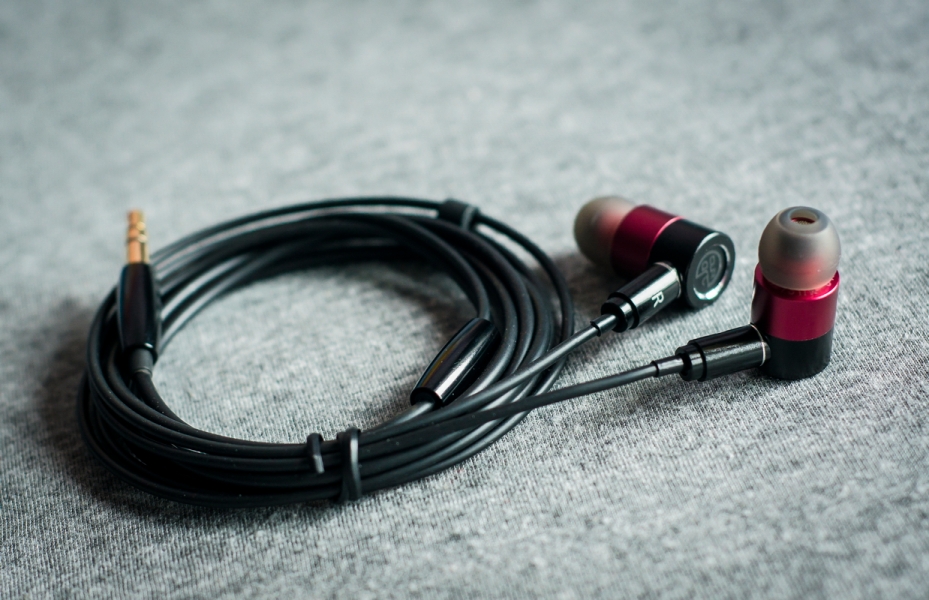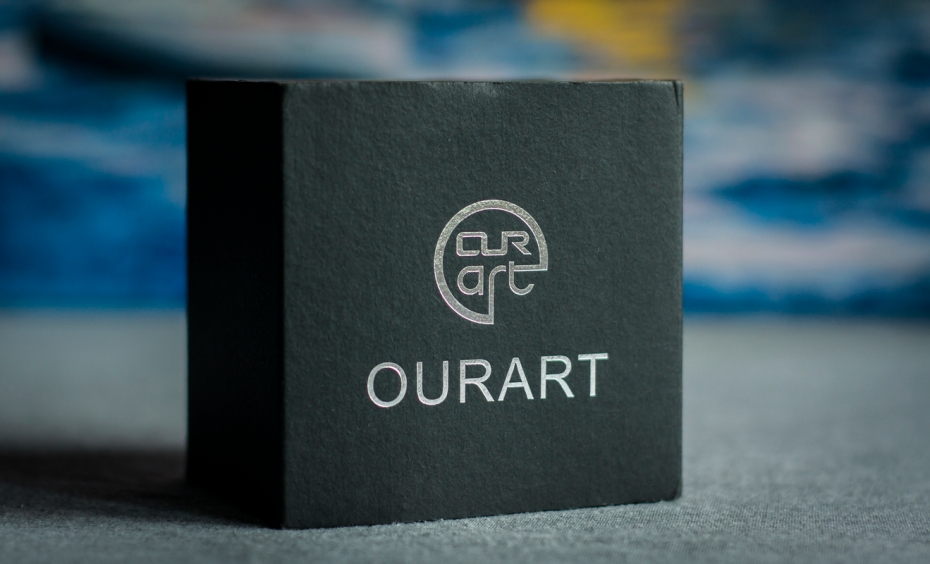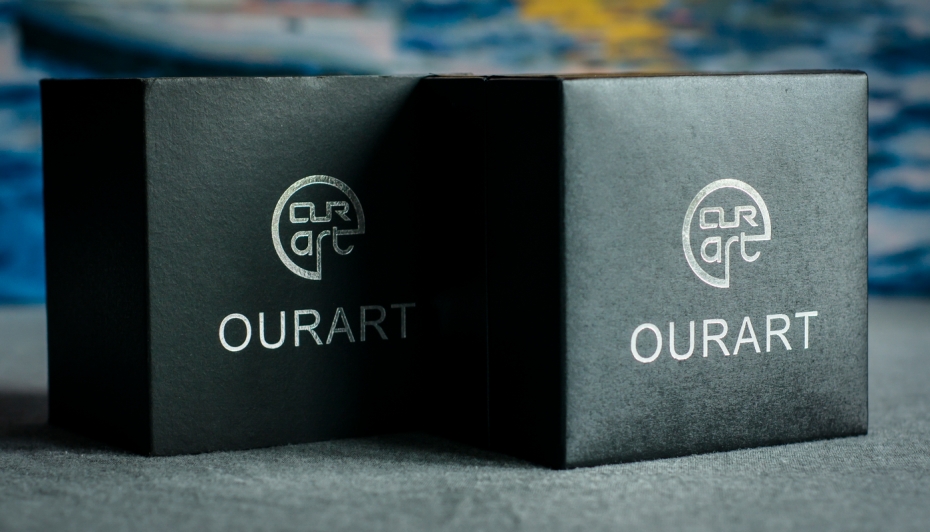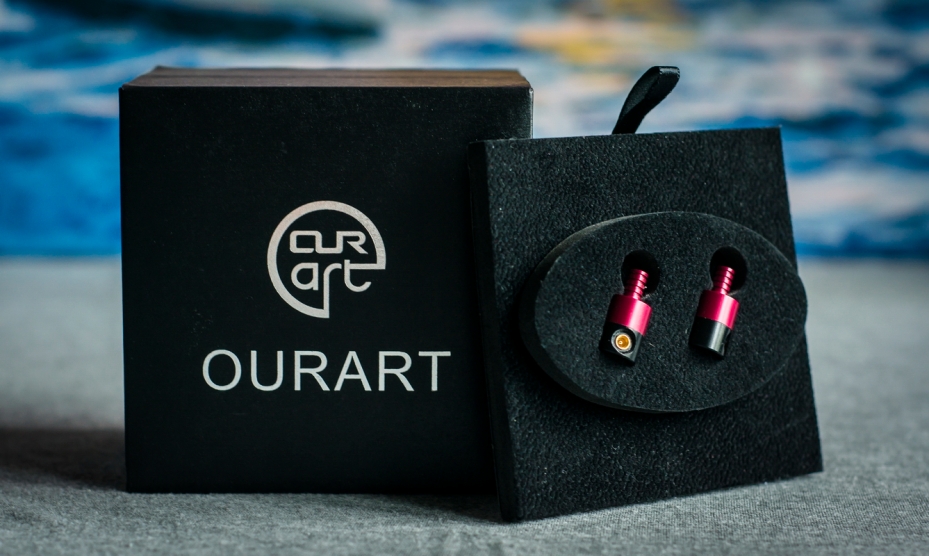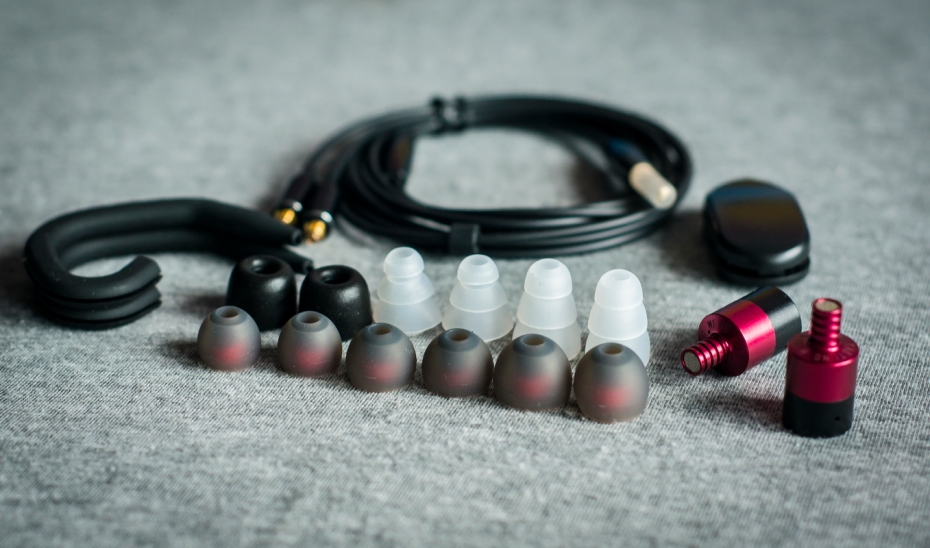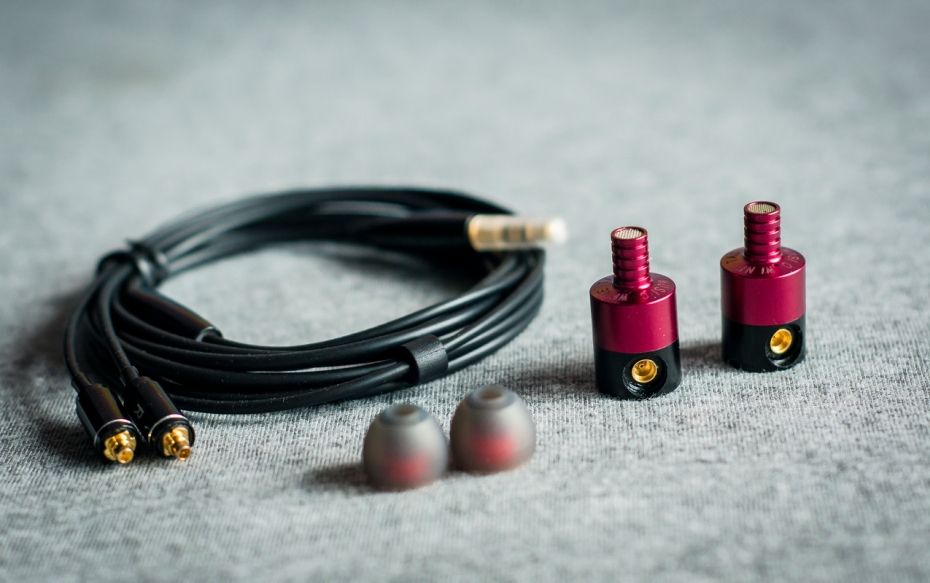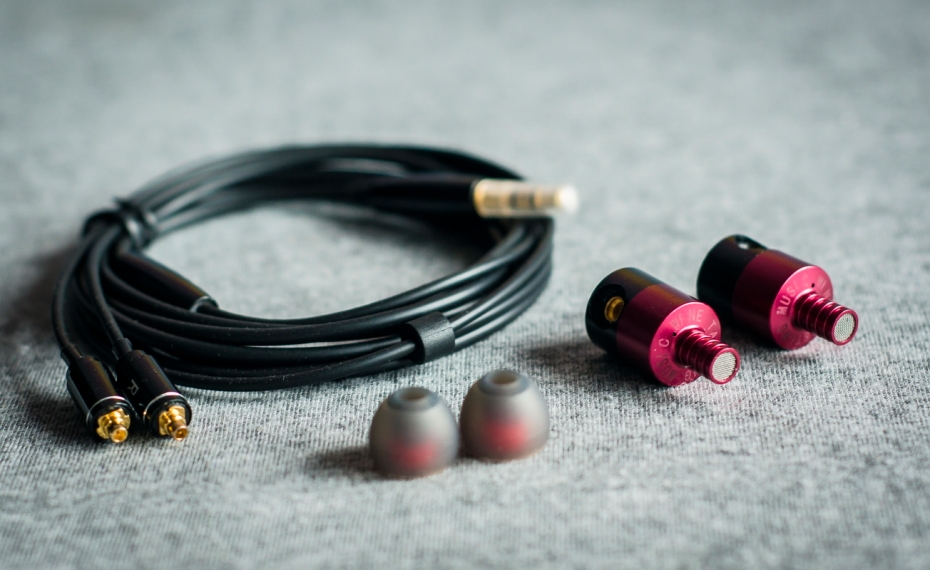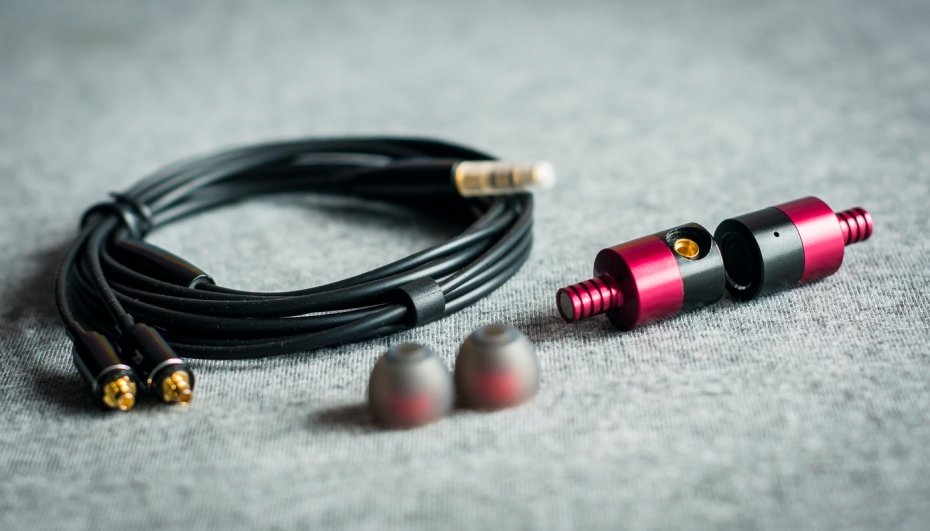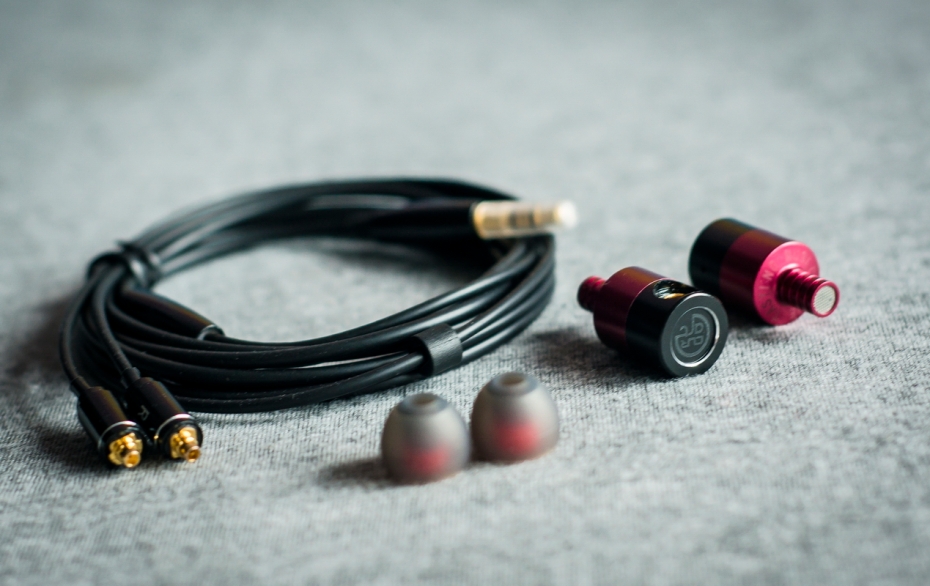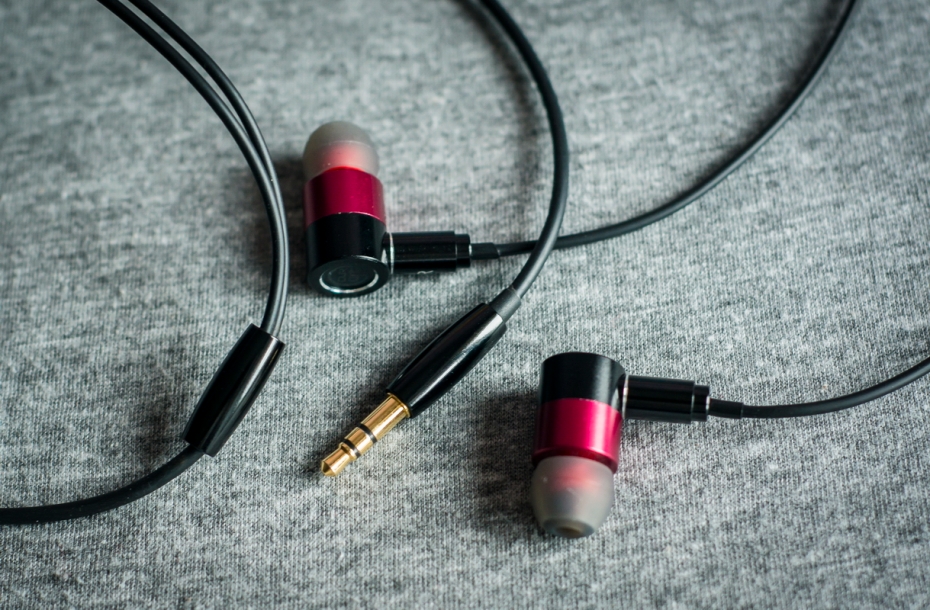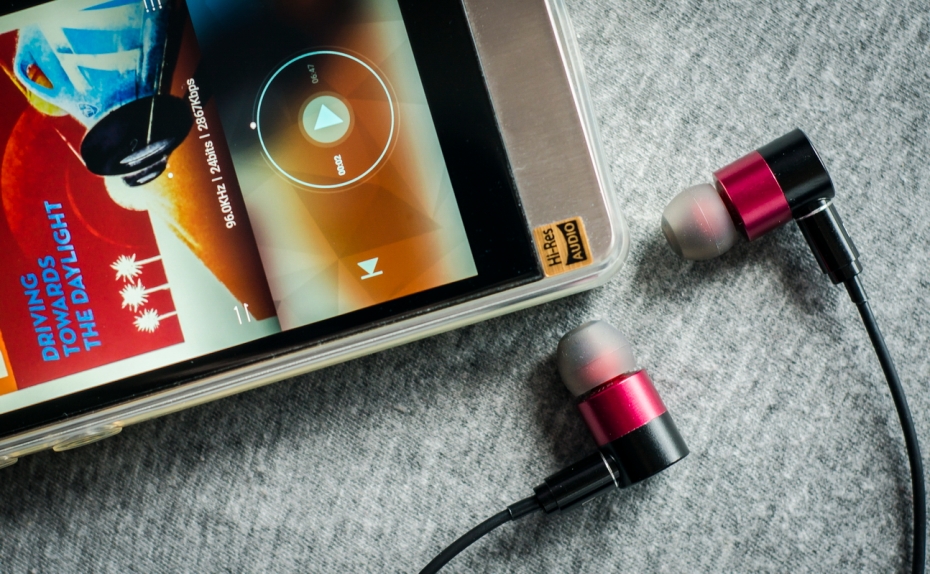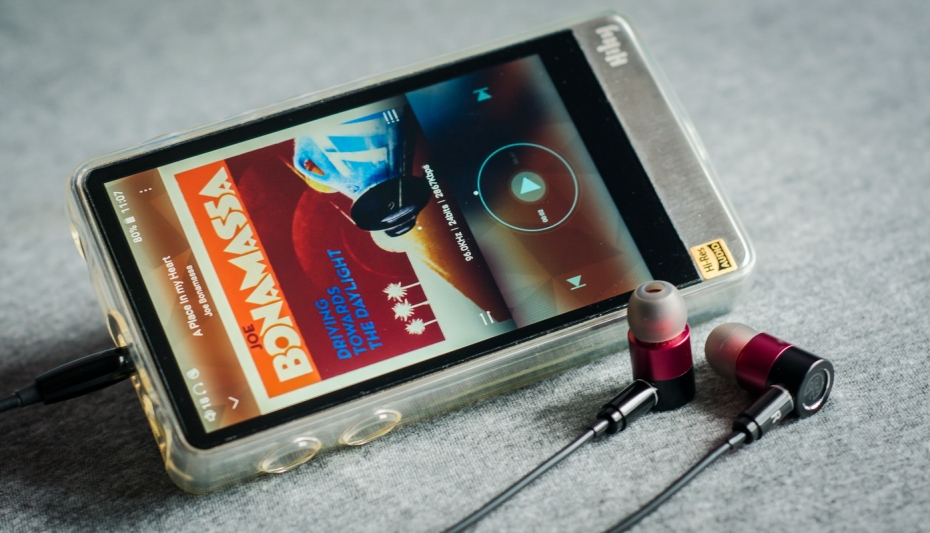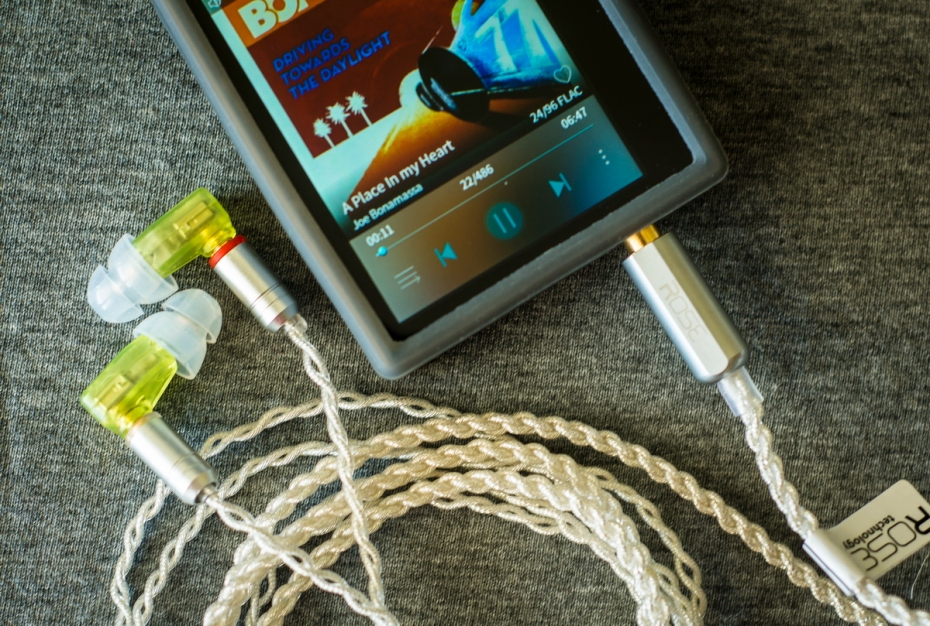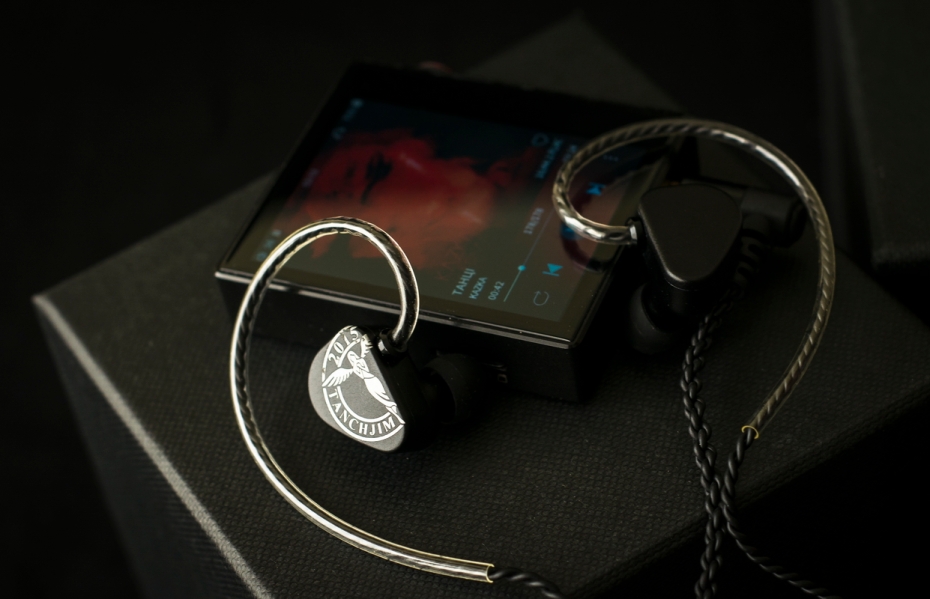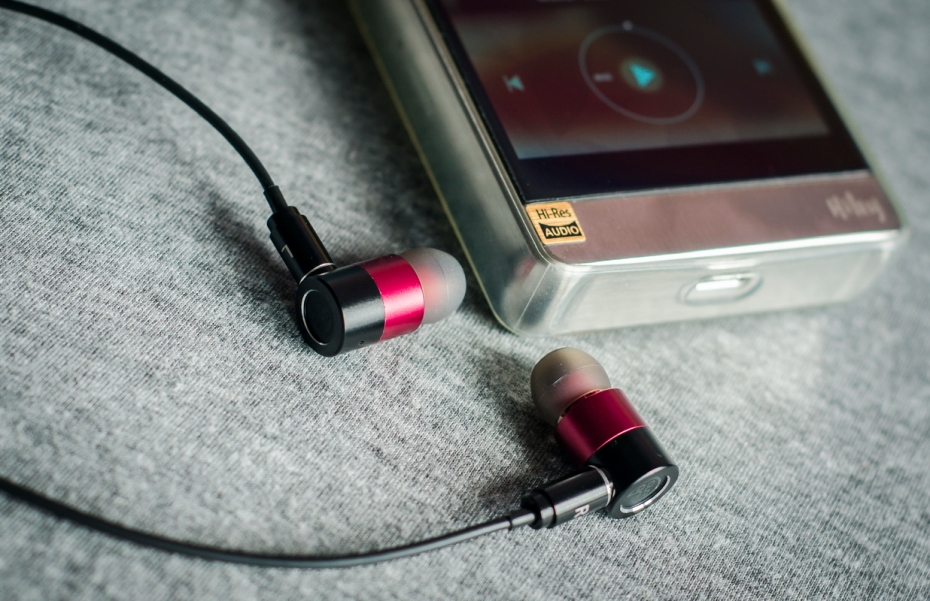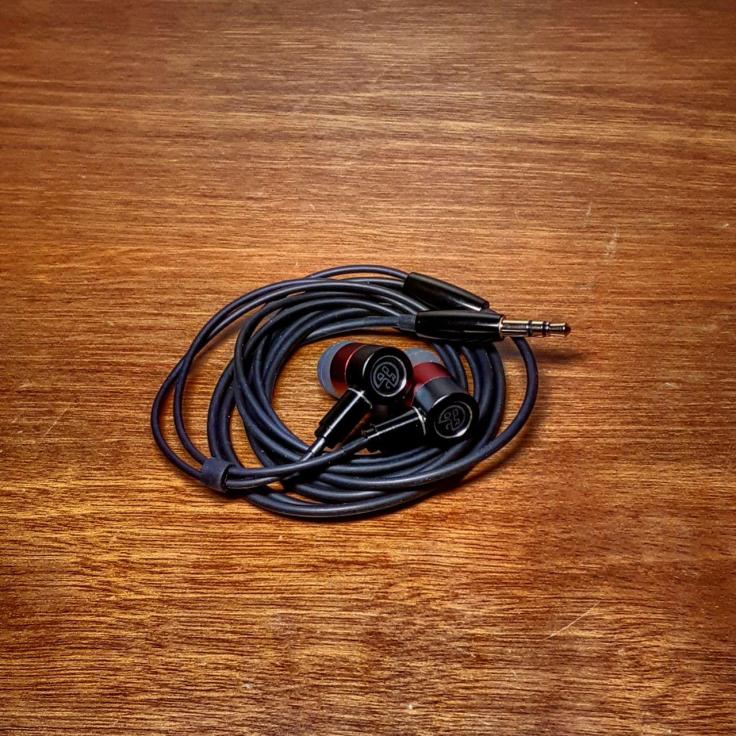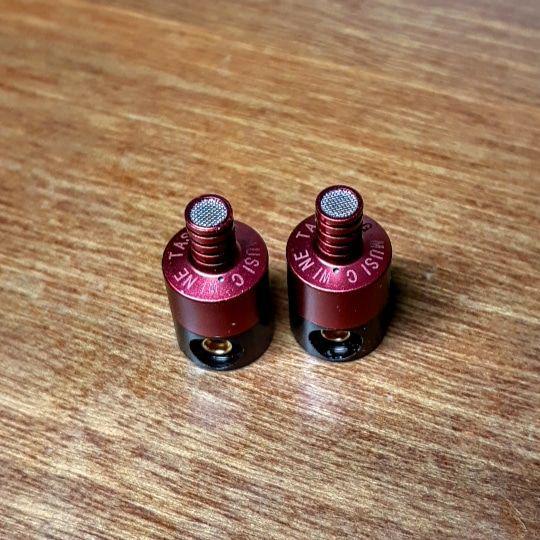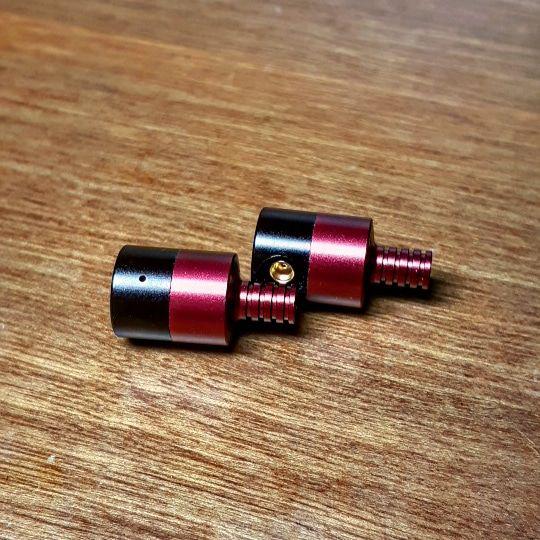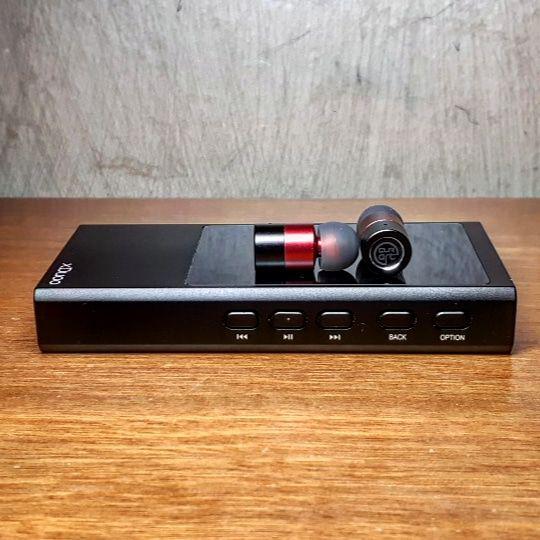Introduction
Again, I review another product of the always surprising brand Ourart. Its name is Wine and, as might be expected, its design does not leave anyone indifferent. These IEMs, honoring their name, evoke the typical drink of my country. Based on their colours, burgundy and black, a capsule has been designed, with a simple appearance, but which, standing up, simulates a bottle of wine.
As a transducer, a dynamic driver has been chosen, composed of beryllium and titanium, which has a wide frequency response. Although the external shape is very simple: two cylinders of different diameters joined together, their external coating has been treated to prevent scratching. This simplicity has nothing to do with the complexity of the interior that the wines hide, as they have been specially designed to offer maximum sound quality. Among other technologies, the Wine has the ability to readjust its sound depending on the volume, guaranteeing maximum fidelity.

 Specifications
Specifications
- Driver: Dinamic Driver Beryllium & Titanium Composite Dynamic
- Frequency range: 10Hz - 35kHz
- Sensitivity: 120dB
- Impedance: 32Ω
- Channel Difference: <±1dB
- Distortion Ratio: < 0.5% Mean (Not 1KHZ) 126mV
- Cable: 115cm, jack 3.5mm gold plated
- Type of capsule connection: MMCX

 Packaging
Packaging
The Wine box, as usual, is the same as that of its cousins, the earbuds Ti7 and ACG. Its dimensions are 100x100x75mm. On the back of the cardboard cover that surrounds the chest, is attached a label, with the full name of the model "Wine Tasting Music" (Wine for friends ...) and the rest of specifications, in Chinese.
After opening the box, you can see the capsules inside an oval mould, which protects them. The sensation is pure: it looks like two mini bottles of wine. After removing the upper mould, it can be found:
- The MMCX cable.
- A zip bag with two white tips tri-flange large size.
- A zip bag with two white tri-flange tips small size.
- A zip bag with three pairs of black tips, with red core, sizes SxMxL.
- Two plastic rings for easy adjustment over the ear.
- A large clothespin.
The warranty card is located in an inside pocket, located at the top of the box.
While the tip collection is adequate, there is no box or carrying bag, which I consider a negative point.
The presentation is very subtle and plays with the colors black and red, as well as with the arrangement of the capsules in the mold, to accentuate the idea of the model name.

 Construction and Design
Construction and Design
The design, a priori, seems simple. But, in reality, Wine hides several details that take them away from that simplicity. The capsules are formed by two pieces, a black cylinder in the back, while the other piece, of burgundy color, are two cylinders of different diameter joined together, in a single body. The part with the largest diameter, 12mm, is attached to the rear cylinder and the part with the smallest diameter is the nozzle. It has horizontal grooves, its diameter is 5mm and its length 7mm. They may be too long for some tips and, depending on their inner diameter, the grooves will perform their stop function, or not. On the base of the nozzles there are engraved letters, with the name of the model "Wine Tasting Music". There is also a small hole.
On the rear black cylinder, on the flat outside, is the logo of the brand. And in the curved part there is a slightly larger hole of 6mm, where the MMCX connection is housed. This makes it difficult to replace the cable, because the connection is inside the hole. Thus, the connectors must be cylindrical and have a smaller diameter, otherwise the connection will not be possible.
It is clear that the capsule without cable imitates a bottle of wine.
The standard MMCX cable has the cylindrical sleeves of the connectors in glossy black. It also has an unpainted groove around it, which is at the edge of the junction with the capsule. The channel letters are white. The cable's protective sheath is flexible black plastic. It has a slight microphonic effect. The divider and the Jack connector sleeve are two somewhat oval cylinders of equal size. The connector is 3.5mm gold plated and there is a small plastic piece to adjust the cable under the chin.
Personally I don't like the cables covered in black rubber. I prefer braided. And I think it's not just personal, but a trend that benefits sound, avoids tangles, the memory effect and eliminates microphones.

 Adjustment and Ergonomics
Adjustment and Ergonomics
The adjustment is quite simple, since the cylinders are not very large in diameter, they fit perfectly in the ears. Their long nozzles and their medium diameter, allow the use of multiple types of tips, making it easier to find the most suitable fit, with the best sound.
Its use can be with the cable down or, easily, can be used with the cable above the ears.
Its external micro roughness offers a very pleasant softness, any rubbing with the parts of our ears is never unpleasant or annoying.
Depending on the tips used, the level of insulation can vary: using tri-flange tips the soundproofing and immersion is remarkable.

 Sound
Profile
Sound
Profile
The profile of Ourart Wine is in moderate V, with enhancement in the lower mids and, above all, in the upper mids.
 Bass
Bass
The low-zone enjoys a curious depth, although the sub-bass is not very pronounced, this range is executed with a very compact energy, which extends the notes in a very physical way. The hit is born in the mid-low and quickly spreads downward, to decay significantly deep. This remarkable virtue gives the lows a wide and descriptive path, which deserves detailed attention, for their particular enjoyment.
But as a whole, the low zone does not have a predominance over the rest of the zones, but it remains behind the high mids, since the incipient highs are perceived above. In spite of this, the mid-low hits hard, but without knocking, allowing each of its layers to be tasted before disappearing. Of course, all this generates that the level of detail of the bass is quite good, remarkably defined and stratified.

 Mids
Mids
The lower mid zone, coming from the emphasis of the mid-lows, continues to enjoy good presence. This gives the sound warmth, but I would not speak of darkness, because the upper mids prevents it. But it is true that the central zone is polarized, almost divided. Male voices have a body that dilutes as frequencies rise. This fact causes them to show themselves displaced to a second plane, without their clarity being penalized. However, the greater emphasis of the upper-mids, lengthens the notes of the voices more than desired. Female voices lengthen in the same way, but in a more natural way, as their range seems to have passed the gain valley.
Instrumentally speaking, the sensation is very similar, it is something that can be appreciated, for example, between male voices and guitars: each one belongs to a different side. This fact can be harmful, but nevertheless, in many occasions, it is beneficial, because it provides an extra clarity and a particular dual focus, which favors the protagonism of both.
As a whole, the mid zone has a warmer, more emotional part and a more energetic, vibrant, dynamic, incisive and sometimes more aggressive part. A whole waste of complexity well resolved.

 Treble
Treble
The first highs are on the crest of the wave, as are the upper mids: it is the right side of the V, whose emphasis is greater. In this way, the incipient brightness is remarkable, but focused, like a small, crisp flash. Its incidence in the rest of the ranks is clearly perceived, sometimes for the better, sometimes causing an unnecessary hiss. On the good side, detail and definition benefit considerably from it. On the other hand, there is a rapid drop in gain, above 6kHz. This limits the extent, causing a feeling of shortness of breath, without leading to congestion. This sudden drop in the following highs can generate that perception of relative darkness, but I still think that this sensation is mild, compared to other really dark models in my collection.

 Soundstage, Separation
Soundstage, Separation
The scene has an average width, represented in a concave shape. There is more proximity at the ends, but greater stratification in the central part, propitiated by the generous depth of its sound. The relative remoteness of the voices also contributes to this sense of length in the mid-zone. The instrumental recreation is subordinated to this sensation, generating an orchestra director's vision, but in a not very big stage.
The separation is perceived very similar, the sound has good cohesion, sufficient clarity, but is limited in its amount of air. Thus, the notes do not enjoy a great distance, but are characterized by having a greater smoothness, which provides a more mellow and emotional character on the one hand, vivid and detailed on the other.

 Comparisons
Anew U1
Comparisons
Anew U1
The general profile of the Anew U1 is bassier than that of the Wine. But it is also in V, although the U1 incline their emphasis in the low zone, while the Wine, in the high mids.
The Anew have a low zone similar to that of the Wine, although they have a greater presence in general and the sub bass is deeper. The mid-low authority level is very similar in both, but the extension tends towards the Anew side. The rest of the characteristics of the low-zone maintain equality, at the level of detail, stratification and layers. I only find differences in the drier and more compact Anew hit.
In the mid zone the sonority is much more different. Warmth is more noticeable in the Anew, with a certain comparative veil. The means in the Wine are fresher and more vivid. The voices sound more complete in the Wine, with more body, more natural. In the Anew, sometimes a certain hollow is perceived in them. Thus, the voices, in general, have better realism, more closeness and are more vibrant in the Wine.
The upper mids and first highs of the Wine, have a clear presence over the U1. The cymbals are characterized by a more perfectly audible sound and are not as mitigated as in the U1. This range has more sparkle, color and better resolved complexity, sounding more natural. This feature brings more light and overall clarity, especially in dance genres and electronic themes. Anew feel comparatively duller, darker. Then, the trebles in the U1 have a point of greater extension.
At the level of detail, there are differences of appreciation. The level is similar, perhaps the Wine are more descriptive in general. But the Anew also enjoy good resolution, offering a more immersive sound, more extensive in both limits. In this way, the scene is seen wider in the Anew, more spherical. The separation is similar, but there is more air in the U1 and a darker background.
 1More Triple Driver
1More Triple Driver
The 1More are a clear example of bassy, warm, high contained and dark IEMs. Despite this, their frequency response, up to 1500Hz, is very similar to that of the Wine. After that point is where the differences start. Wine's high mids have more emphasis, and that's something that totally polarizes their sound and profile.
Although the curve is quite similar in the low end, the execution of the bass is not equal, the definition, the detail, the depth and the color are better in the Wine. The 1More offer a more diffuse bass, less descriptive, thicker, with less stratification.
In the mid zone the difference is evident: the 1More offer an excessive warmth compared to the Wine, which turns into darkness. The voices, in the Triple Driver, are excessively nuanced, with a body too blunt and round, devoid of brightness and detail. Unlike the Wine, where they are presented with a more natural and dynamic sonority, they are more vivid and with better color. However, their presence in the 1More is closer.
The highs fall even earlier in the 1More, but their descent is not so great. So there is some more air, comparatively speaking. But the first highs are smoother than in the Wine.
The darkness, the lack of brightness, the containment in the highs, makes the scene and separation of the Triple Driver behind the Wine.
 Conclusion
Conclusion
The Ourart Wine are almost conceptual IEMs. From their design to their sound, they are based on the idea of wine: the capsules are two bottles, their colours are burgundy and black, their sound is almost red, but endowed with a certain ambivalence, warmth and sparkle, softness and energy, depth and dynamics. The wines are soft and emotional in the lower part, abrupt and incisive in the upper mid part. While their trebles have been contained to maintain the color of the concept. The presentation rounds off the idea and the ergonomics take advantage of it, offering great freedom in this aspect, so that everything flows as it should. The result is a glass of red wine from my country, which can be enjoyed without haste, at dusk on the long, warm days of this summer, which looks like it is going to be endless.

 Sources Used During the Analysis
Sources Used During the Analysis
- Burson Audio Playmate
- xDuoo X3II
Ratings
- Construction and Design: 90
- Adjustment/Ergonomics: 85
- Accessories: 75
- Bass: 80
- Mids: 75
- Treble: 70
- Separation: 70
- Soundstage: 70
- Quality/Price: 75
Purchase link
https://penonaudio.com/ourart-wine.html
You can read the full review in Spanish here:
https://hiendportable.com/2019/07/07/ourart-wine-review/

























